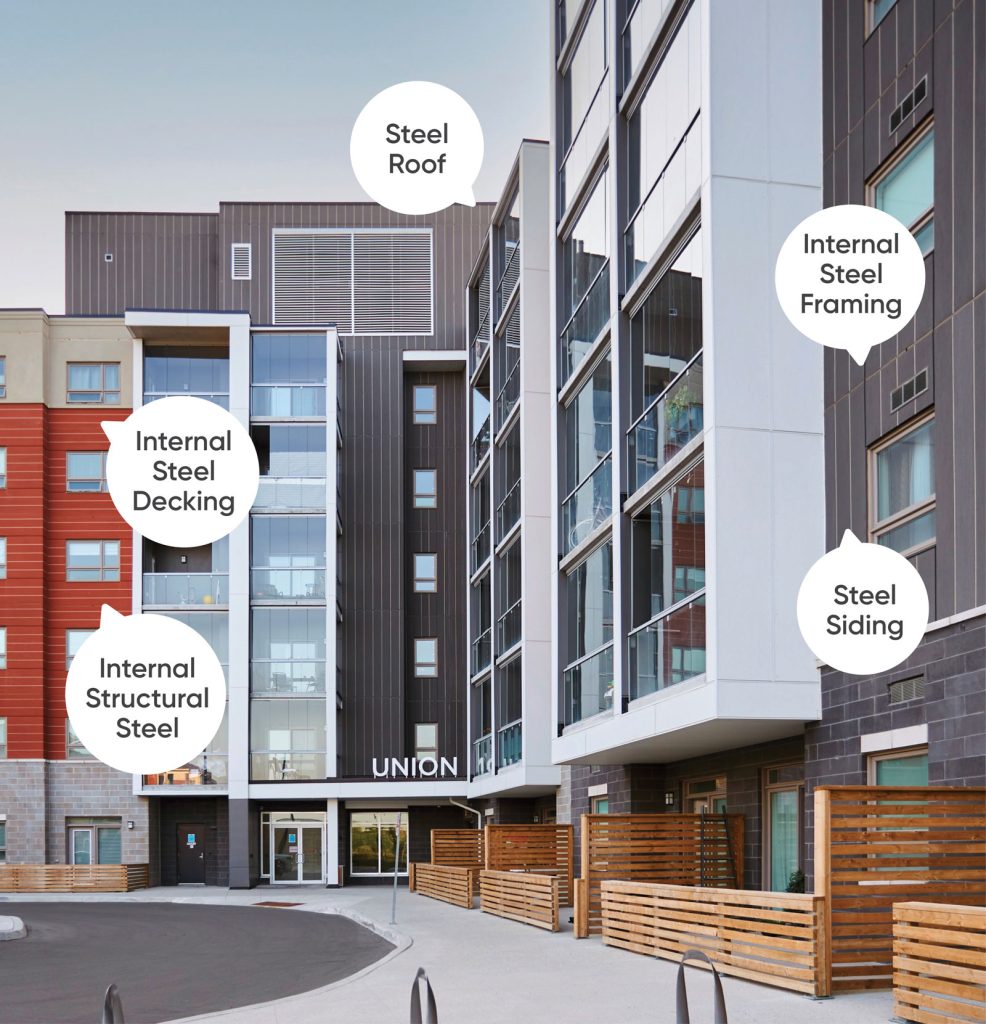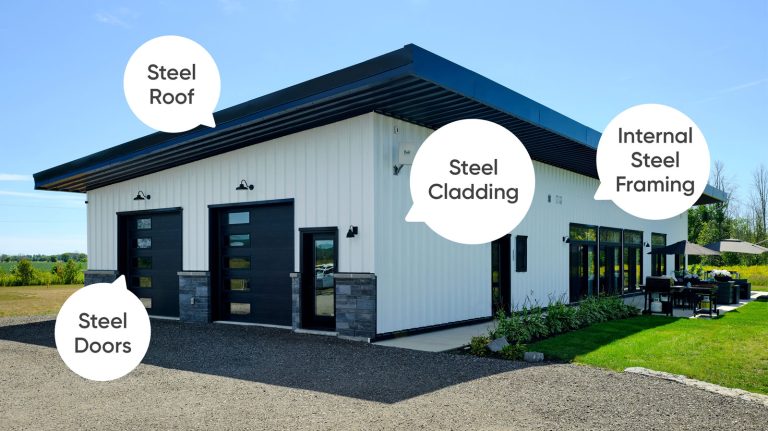You can’t build Canada without Steel
Steel serves as the surprising backbone of Canada’s residential construction sector. You can be forgiven for thinking otherwise: driving past half-completed suburban developments reveal wooden framing and plywood sheathing. But if Canada is ever to accomplish its goals of building sufficient housing to address our housing crisis, we need to embrace the benefits of Canadian steel.
Recently, Prime Minister Mark Carney announced the launch of Build Canada Homes, an ambitious agency that will not only build 4,000 homes and an additional 45,000 units of housing across Canada, but galvanize private developers to use modern construction techniques to create affordable housing at scale.
This housing blitz is only possible thanks to steel. While steel is already a major material being used in residential construction of all shapes and sizes, we will need to take those lessons and apply them across all types of residential construction.
Where we use steel today: high to low
While lumber framing is still common in detached builds, steel framing is the go-to material for multi-unit buildings around the world, where steel’s lightness and strength adds safety to mid-rise and high-rise buildings. And if framing is the “ribcage” of the building—adding shape and protecting the important functions of the building—structural steel is the spine of the tallest towers, building off of concrete cores to maximize usable space inside the skyscraper.
Steel paneling—specifically Insulated Metal Panels (IMPs)—and steel cladding create rigid envelopes that serve as the exterior skin of the building. Steel envelopes allow mid-rise developments to rapidly rise with minimal internal supports. In effect, the envelope becomes the structural supports of the building.
But steel is even useful in smaller, single-family homes—homes that currently are overwhelmingly built with timber. Steel roofs last decades longer than asphalt shingles, and steel entry doors and garage doors are now common. If your home is open-concept, it uses steel beams to avoid load-bearing walls.
Reimagining home construction with steel
If Canada is to accomplish our goal of mass-building affordable housing, then we can’t use the same methods that contributed to our housing crisis. We need to re-think our approach to building: look for what works, and how we can use those lessons everywhere.
We know what to do: steel shortens construction timelines, lowers costs, and offers greater durability compared to other materials.

Efficient construction
The pre-fabricated nature of steel buildings allow for faster construction and less time on site. Steel siding, cladding, and roofing uses similar products, slashing costs, manufacturing times, and assembly. Multi-unit housing made with IMPs allow faster winter construction, protecting trades in freezing temperatures.
Environmentally-friendly
Steel is the most-recycled material in construction, and, thanks to recent advancements, offers lower embodied carbon content. Innovative architects already use steel as a primary material for their sustainable buildings and Passive Houses (ultra-efficient buildings that use building techniques to reduce energy use); it’s time for the rest of us to catch up.
Safe homes
Steel is non-combustible, making it a key material for cities and towns at risk of wildfires. Steel, therefore, means denser housing in these areas, which means more housing for Canadians.
Homes that last
Galvanized steel has longer lifespans than concrete, masonry, and untreated timber. Canadians don’t need homes cheaply-built for the sake of speed; if we don’t want to have the same housing problems in 2050, we need homes that are durable, strong, and built to last.
To learn more about how steel builds Canada, visit dofasco.arcelormittal.com



